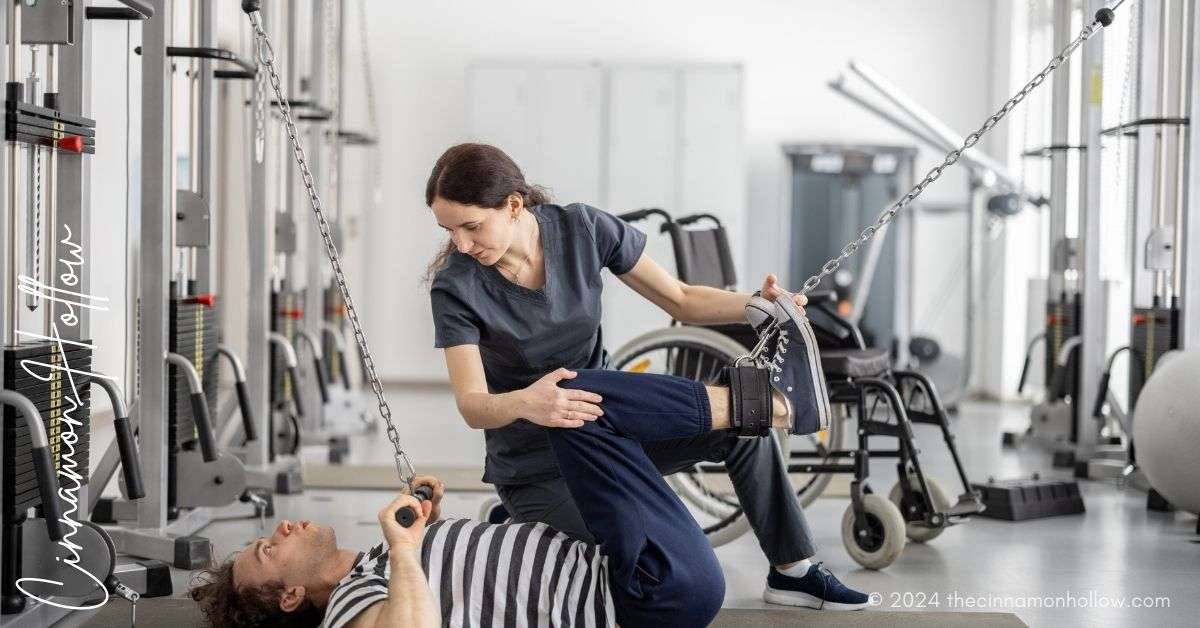Introduction To Physical Therapy
Physical therapy plays a pivotal role in the rehabilitation process at orthopedic centers. Institutions like OCC Ortho employ various therapeutic techniques to help patients regain mobility, strength, and function. These therapies are carefully designed to ensure the best possible recovery outcomes, allowing patients to return to their daily activities with minimal disruption.
The primary goal of physical therapy is to promote healing and restore movement. Physical therapists can craft personalized plans that address specific conditions and injuries by assessing each patient’s unique needs. Whether treating a sprained ankle or aiding in post-surgical recovery, physical therapy adapts to patients’ diverse needs, ensuring effective and comprehensive care.
Benefits Of Physical Therapy
Physical therapy offers numerous benefits that significantly contribute to the overall rehabilitation process. One of the most notable advantages is its ability to reduce pain and improve movement. Regular physical therapy sessions can help patients with acute injuries or chronic diseases by regaining their capacity to do daily chores, improving their quality of life, and decreasing symptoms.
Furthermore, physical treatment can avoid the requirement for surgical procedures. Increasing joint flexibility and muscle strength are frequently functional substitutes for invasive procedures. By shortening the healing period and lowering healthcare expenses, this non-invasive method enables patients to return to their regular activities sooner and with less difficulty.
Personalized Treatment Plans
At an orthopedic center, personalized treatment programs are created based on each patient’s specific requirements. Physical therapists perform comprehensive assessments to identify the best healing therapy. These adaptable plans consider the patient’s progress and input, guaranteeing a dynamic and proactive approach to rehabilitation.
This individualized approach maximizes the efficacy of the rehabilitation process by ensuring that patients receive the best care tailored to their circumstances. Routine evaluations and plan revisions are crucial to address any changes in the patient’s condition and maximize recovery outcomes. Physical therapists can provide focused, efficient care that expedites healing by concentrating on each patient’s unique needs.
However, it’s unfortunate to say that a lot of patients who need physical therapy after an injury don’t always get the care they need. It’s primarily due to finances (and this includes their health insurance company not covering the cost, too). Depending on how or why you need to see a physical therapist, such as an accident during work, you might need to see a professional, such as a truck accident lawyer, if you got hit by one (or if you work as a truck driver, for example too). Your lack of finances shouldn’t get in the way of your healing and feeling better, and you deserve justice.
Common Techniques Used
Physical therapy uses various methods, such as manual therapy, which involves moving joints and muscles to relieve pain and regain function. This technique can increase blood flow, reduce scar tissue, and increase range of motion. Another essential element is exercise, which therapists advise to strengthen muscles, increase flexibility, and boost injuries. Chronic pain disorders respond well to ultrasound therapy, which uses sound waves to create heat and aid tissue healing. This therapy also speeds up recovery. These methods are crucial parts of rehabilitation programs.
Physical Therapy For Different Conditions
Physical therapy is an adaptable tool that can treat various ailments, such as chronic illnesses like arthritis, sports injuries, and rehabilitation following surgery. It entails specialized treatments that support recovery and discourages re-harm while addressing the unique requirements of the patient. Physical therapists provide thorough rehabilitation programs that consider the particular difficulties associated with specific ailments. They also use workouts that improve joint flexibility and lessen discomfort to manage long-term problems like arthritis. The finest care is provided based on the individual needs and conditions of each patient through a patient-centered and holistic approach. Another crucial area in which physical therapy shines is post-surgical rehabilitation, where methods like ultrasound and manual therapy promote healing and provide the best results.
Measuring Success In Rehabilitation
Physical therapy success is evaluated using various criteria. Critical markers of development include increases in functional ability, decreases in discomfort, and improvements in range of motion. Physical therapists perform routine exams to help track these parameters and modify treatment plans as necessary, resulting in a dynamic and adaptable rehabilitation strategy.
Patient feedback is also very important in assessing success. The therapist and patient’s ongoing communication ensures treatment effectiveness and prompt adjustment. By working together, the rehabilitation process is more likely to be effective, patients will receive the greatest care, and results will be the best.
Expert Opinions And Research
Experts agree on the importance of comprehensive physical therapy programs. According to Harvard Health Publishing, early intervention often leads to better outcomes in orthopedic rehabilitation. Physical therapy effectively increases patients’ mobility, lowers their pain levels, and improves their overall quality of life.
Constant improvements in physical therapy methods and equipment support the sector even more. Patients will receive the finest care possible if practitioners follow the most recent research and incorporate new techniques into their practices. Physical therapy procedures are improved via the joint efforts of researchers and practitioners, which helps countless patients worldwide by offering creative and efficient treatment alternatives.



[fluentform id="6"]